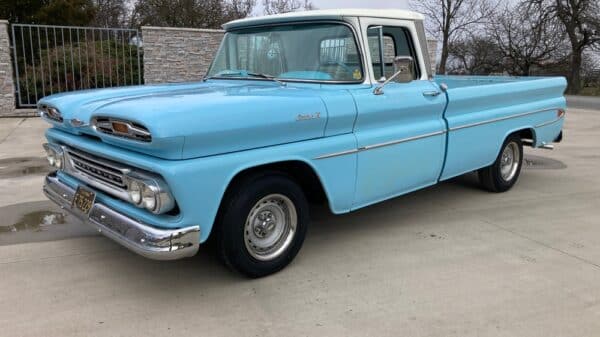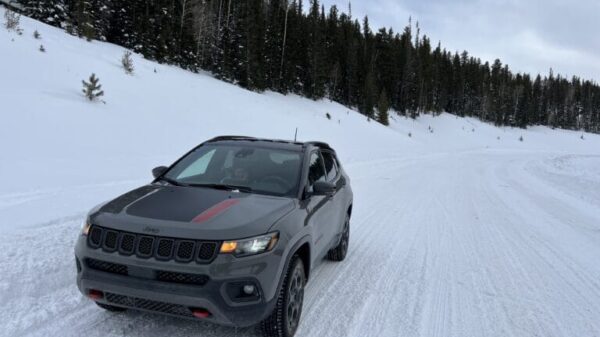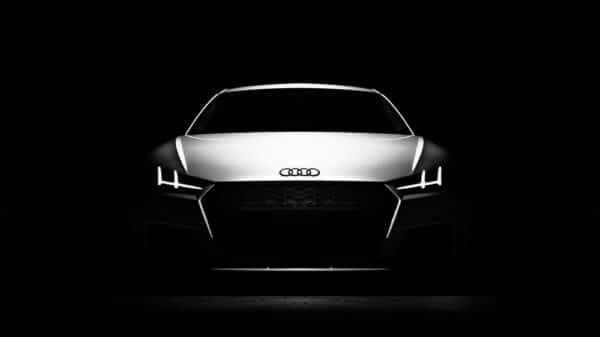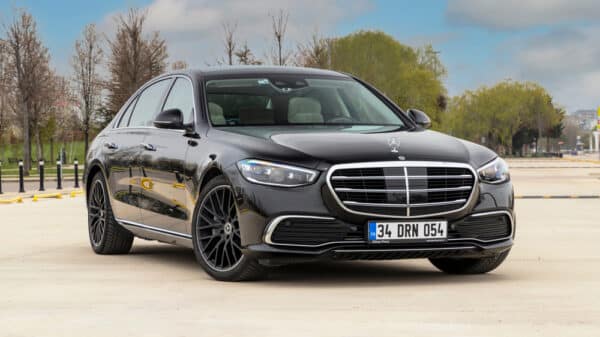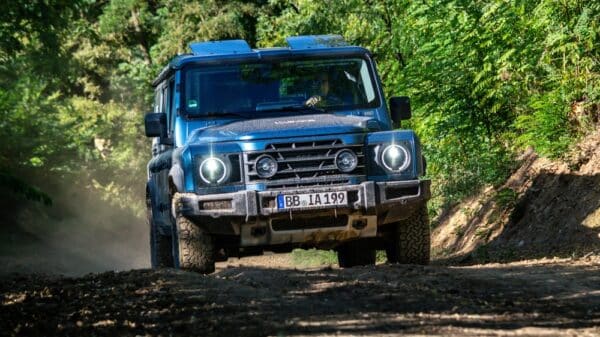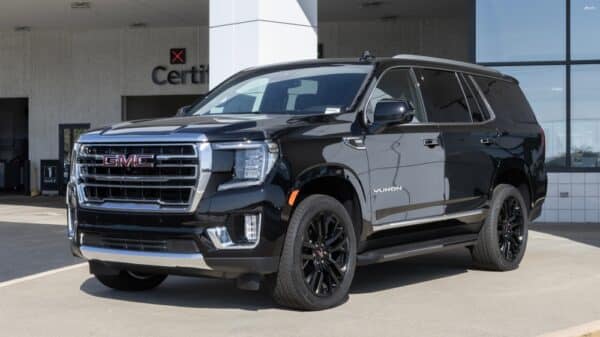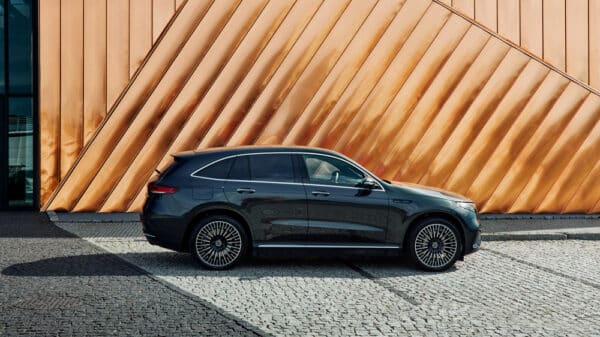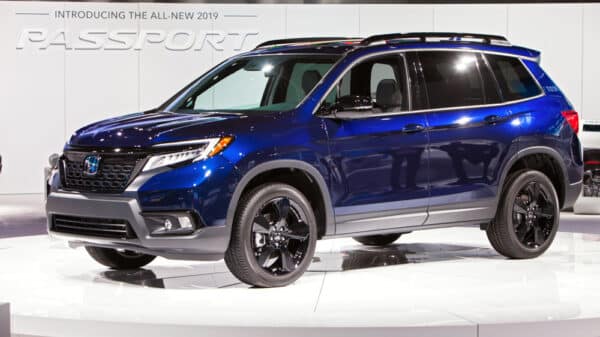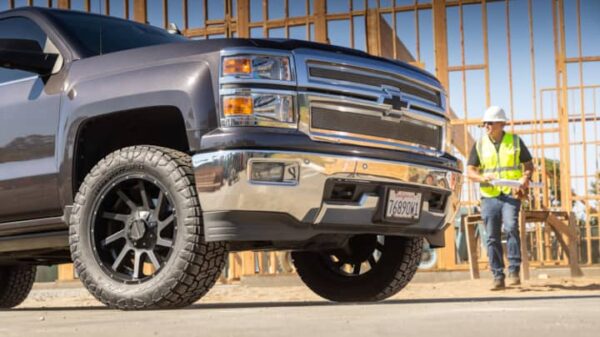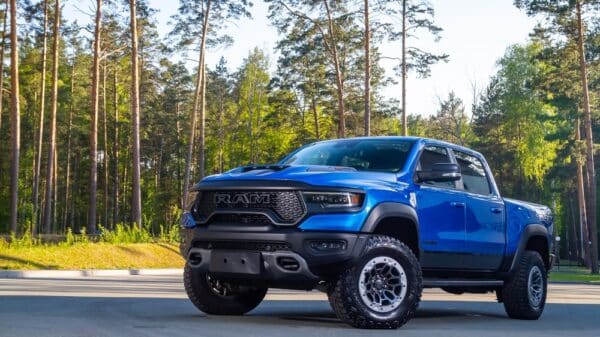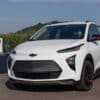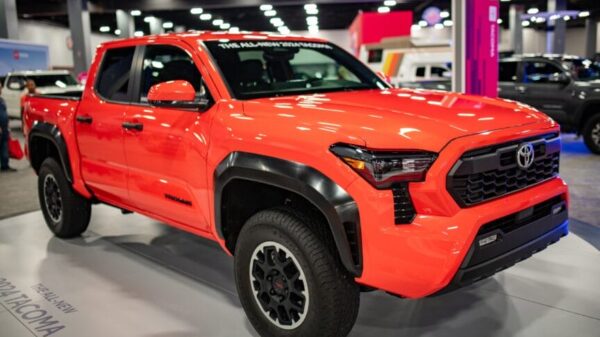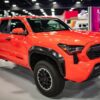A new competitor to the Rivian R1S’s electric SUV supremacy is on the horizon, emerging from South Carolina with roots in Germany. The Scout brand has been revitalized by Volkswagen.
On Thursday, the electric Scout Traveler SUV was launched as a formidable opponent to the Rivian R1S off-road electric SUV.
Displayed in what Scout calls a concept phase that’s 85% ready for production, we compare the specifications of the electric Scout SUV against the Rivian R1S.
When and where can you purchase the Scout Traveler and Rivian R1S?
The Rivian R1S is currently available for purchase and has been produced since late 2021.
According to the automaker, the Scout Traveler is slated to begin production in 2027.
Customers can place a $100 refundable deposit on the Scout Traveler now.
Rivian conducts direct sales through its website, allowing customers to buy an R1S in just moments with a few clicks. They even accept Apple Pay for the deposit.
Scout has stated that it will manage its own sales and service network via direct sales to consumers but has not provided further details on the approach.
What are the prices for the Scout Traveler and Rivian R1S?
The Rivian R1S is priced at $77,700, which includes an $1,800 destination charge.
The R1S will be available for up to around $120,000 when the quad-motor version is launched in 2025, and can currently run close to $110,000 with a tri-motor configuration.
Initially, Scout indicated the Traveler would start at around $40,000, but it is now marketed for less than $60,000.
What range do the Scout Traveler and Rivian R1S offer?
The Rivian R1S boasts an EPA-rated range from 258 to 410 miles, varying with the battery size and motor configuration.
Scout has indicated that the Traveler will offer a range of up to 350 miles.
The Scout Traveler will feature a Harvester option, which includes a gasoline-powered range extender, increasing the driving range capability to as much as 500 miles. The gas engine will not be directly connected to the electric motors or wheels but will solely charge the battery pack.
How quickly do the Scout Traveler and Rivian R1S charge?
The Rivian utilizes a 400-volt electrical system allowing for a peak charging rate of up to 220 kW.
The Scout Traveler, on the other hand, will incorporate a more advanced 800-volt electrical architecture with an expected peak charging rate of 350 kW, utilizing Tesla’s NACS plug.
What are the dimensions and passenger capacity of the Scout Traveler and Rivian R1S?
Every Rivian R1S offers three rows of seating, including two front bucket seats, a second-row bench accommodating three, and space for two in the third row. Although the third row is not as spacious as that of the Chevy Tahoe, it can comfortably fit adults for short journeys.
Measuring 200.8 inches, the Rivian is 3.6 inches longer than the Kia EV9 but 4.1 inches shorter than a Jeep Grand Cherokee L and 9.9 inches shorter than a Chevrolet Tahoe.
The Scout Traveler will feature a two-row design, accommodating five or six passengers. The front row will be available with either a center console with bucket seats or a bench seat designed for three. The second-row seating will also be a bench style for three passengers.
According to Scout, the Traveler will measure 207.9 inches long and 91.6 inches wide, making it larger than the R1S and slightly shorter than the Chevy Tahoe by about two inches.
What are the power outputs of the Scout Traveler and Rivian R1S?
The Rivian is available with two-, three-, or four-motor configurations, delivering between 533 hp to 1,025 hp, with torque reaching as much as 1,198 lb-ft.
Scout has stated that the Traveler will feature two electric motors, each mounted on an axle, producing roughly 1,000 lb-ft of torque, but hasn’t disclosed the horsepower figures yet.
How does the off-road capability of the Scout Traveler compare to the Rivian R1S?
All Rivian R1Ss come equipped with a sophisticated four-corner air suspension and a hydraulic kinetic roll-control system, eliminating the need for mechanical anti-roll bars.
Rivian models also feature independent suspension systems for both front and rear.
The Rivian R1S can be raised to 15.0 inches of ground clearance and has the capability to fording water up to 43.0 inches deep.
The Scout Traveler will feature a solid rear axle equipped with mechanical lockers for both front and rear, and will offer the option of disconnecting front sway bars.
Scout claims that the Traveler will be compatible with up to 35-inch all-terrain tires, offer over 12.0 inches of ground clearance, and be able to ford water nearly 36 inches deep.
Additionally, the Traveler can be fitted with an optional rear-mounted spare tire carrier for the 35-inch all-terrain wheel and tire combination.
Which SUV is faster: the Scout Traveler or Rivian R1S?
The Rivian R1S clearly outperforms the Scout Traveler in speed.
The Rivian R1S equipped with a quad-motor setup can accelerate from 0-60 mph in 2.5 seconds.
The slowest R1S completes the 0-60 mph dash in 4.5 seconds, while the dual-motor Performance model does it in 3.4 seconds, and the tri-Motor variant achieves this in 2.9 seconds.
Scout claims that the Traveler will reach 0-60 mph in as little as 3.5 seconds.
What are the towing and hauling capabilities of the Scout Traveler and Rivian R1S?
The Rivian R1S has a maximum towing capacity of up to 7,700 pounds while it can carry a payload of up to 1,764 pounds.
In contrast, Scout anticipates that the Traveler will have a towing capacity exceeding 7,000 pounds and will be able to carry nearly 2,000 pounds of payload.
Image Source: Valdis Skudre / Shutterstock

